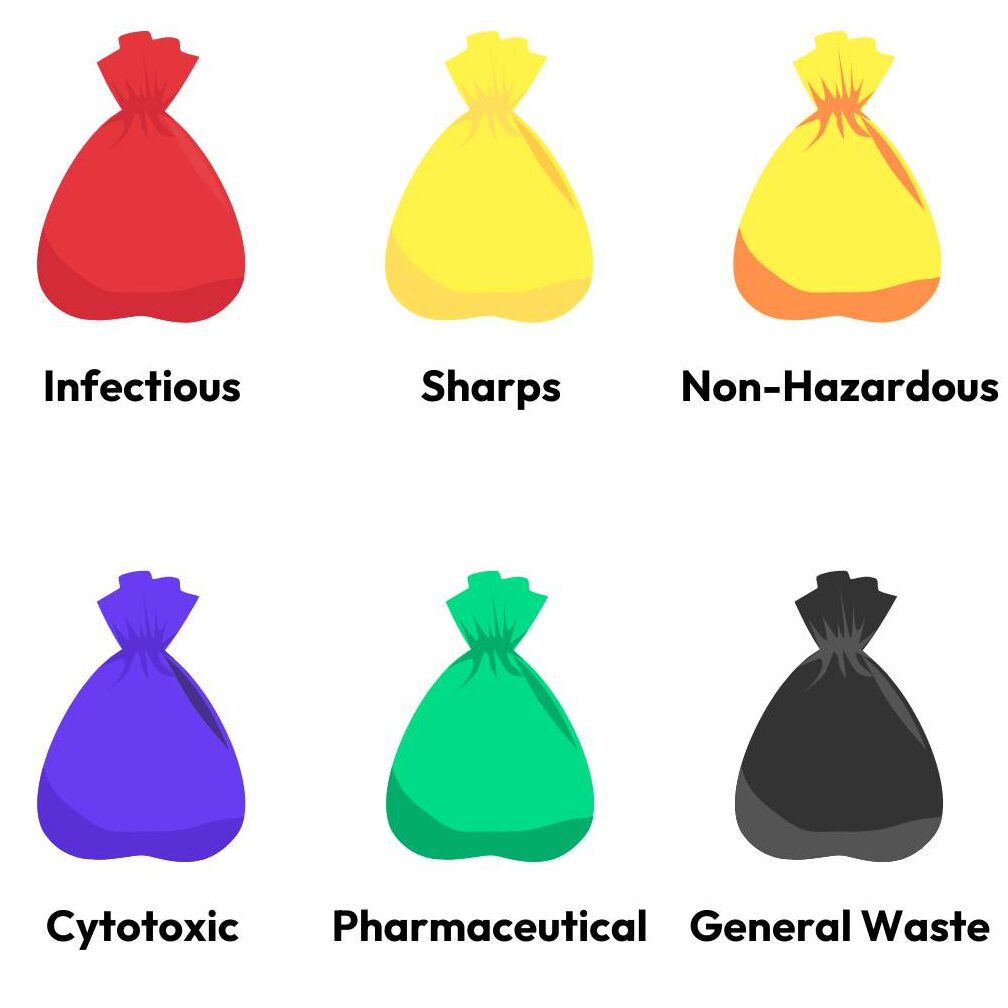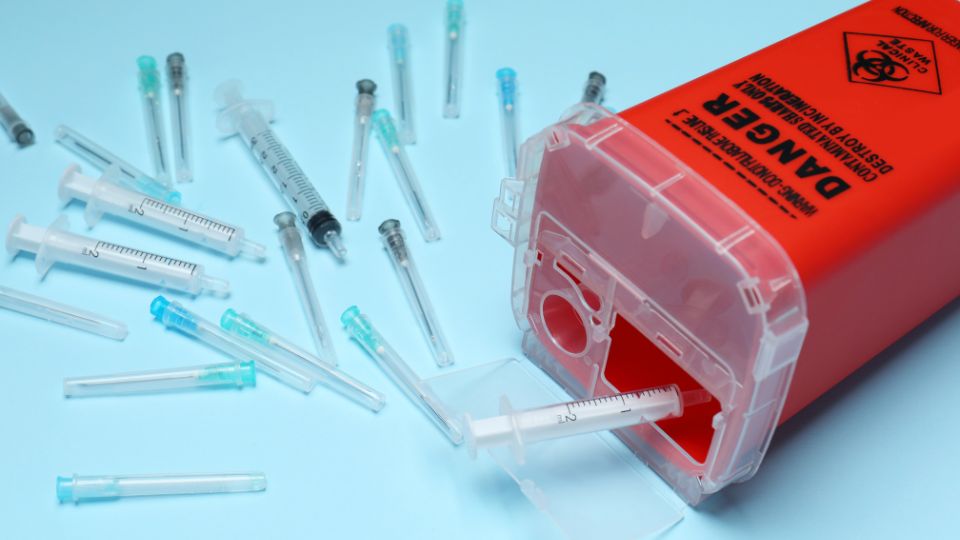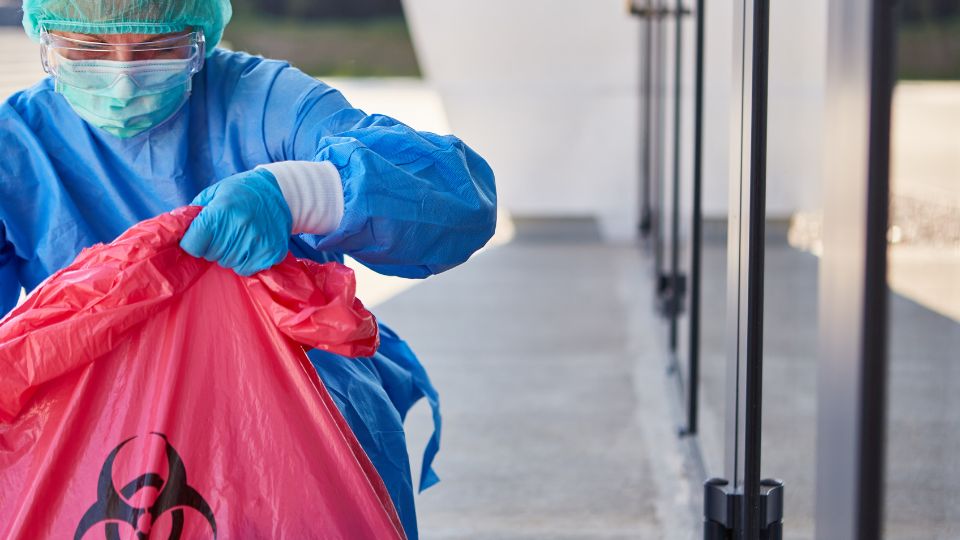
England’s healthcare facilities generate a massive 156,000 tonnes of clinical waste annually.
While current disposal methods (HTI & AT) handle this volume, they’re costly and impact the environment.
The answer lies in effective on-site segregation. Separating waste streams reduces cross-contamination, protecting staff and patients. It also unlocks more efficient disposal methods.
By properly sorting waste, healthcare facilities can:
- Reduce reliance on expensive, high-emission incineration.
- Explore greener disposal options for non-hazardous materials.
This guide will equip you with the knowledge to implement effective clinical waste segregation, promoting a safer and more sustainable healthcare environment.
Why Segregate Clinical Waste?
Clinical waste segregation is more than just good practice – it’s essential for a safe and sustainable healthcare environment.
Improperly mixed waste poses a risk of cross-contamination, potentially exposing staff and patients to harmful pathogens.
Additionally, when hazardous and non-hazardous waste are combined, it limits opportunities for more environmentally friendly disposal methods for the latter.
Segregation allows for proper treatment and disposal of each waste type, reducing environmental impact and potentially reducing overall waste management costs.
Segregating Effectively
The key to successful segregation lies in clear procedures, readily available bins, and staff education.
Healthcare facilities should establish a color-coded bin system aligned with national or regional regulations.
Common categories & asigned colours include:
Red
Infectious Waste – Used for items contaminated with bodily fluids or pathogens (used dressings, swabs).
Yellow
Sharps Waste – Designated for needles, syringes, scalpels (always in puncture-resistant containers).
Yellow or Orange
Non-Hazardous Clinical Waste – Suitable for used bandages, soiled linen (not contaminated with bodily fluids).
Purple
Cytotoxic Waste – Specifically for items contaminated with chemotherapy drugs.
Green
Pharmaceutical Waste – Used for expired or unused medications.
Black
General Waste – For non-clinical items like food scraps, paper towels.

Strategic Placement and Staff Awareness
Bins should be strategically placed near areas where waste is generated (treatment rooms, dressing stations) and clearly labeled with pictures and descriptions.
Utilise posters or other visual aids to reinforce proper waste disposal practices.
Educate staff, including new hires, on waste categories and proper disposal procedures through training programs.
Regularly refresh their knowledge to ensure consistent and effective segregation throughout the facility.
By implementing this multi-pronged approach, healthcare facilities can significantly improve safety for staff and patients while minimising their environmental footprint.
Effective clinical waste segregation is a win-win for healthcare facilities. It fosters a safer environment for staff and patients by reducing the risk of cross-contamination.
Additionally, it unlocks opportunities for more sustainable and potentially cost-effective waste management practices.
By prioritising clear procedures, strategic bin placement, staff education, and ongoing awareness campaigns, healthcare facilities can play a vital role in protecting both human health and the environment.
Remember, a well-informed and well-equipped staff is the cornerstone of a successful clinical waste segregation programme.








